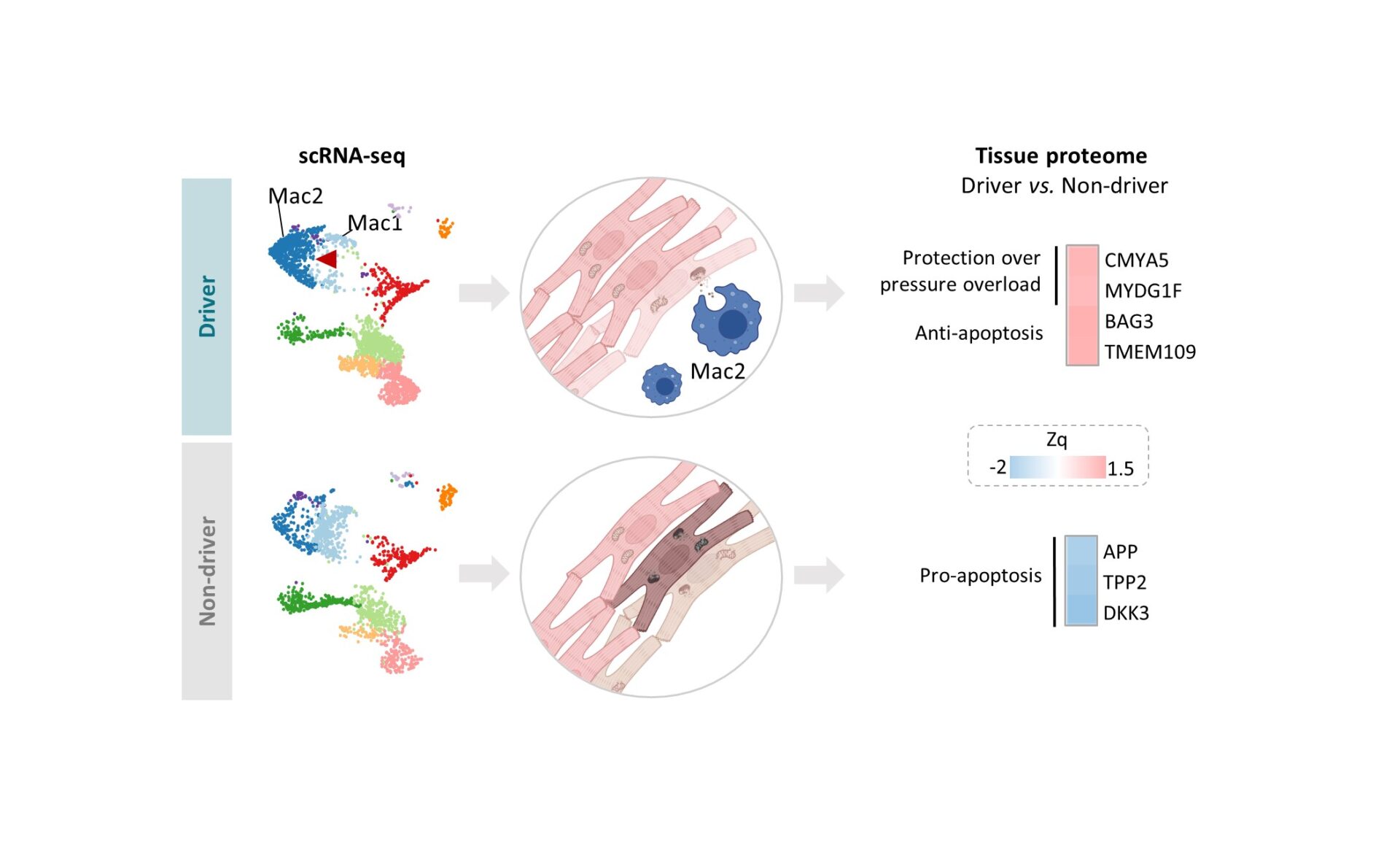Most of the mechanistic insights into atrial fibrillation (AF) pathophysiology have been reported on cardiomyocytes, and it is commonly assumed that apply in the same manner to the atria as a whole. This study shows that atrial remodeling during persistent AF (PsAF) underlies differential adaptative changes in non-myocyte populations, which depend on the functional relevance of individual-specific atrial regions that sustain the overall arrhythmia (i.e., driver regions). Radiofrequency ablation at driver regions can terminate PsAF in pig models and achieve long-term AF-free survival in patients. Importantly, driver regions show overt compositional shifts in fibroblasts and myeloid populations that are highly consistent across pig models and patients. More specifically, driver regions are characterized by a phenotypic shift towards cardiac resident macrophages with an associated transcriptomic and proteomic profile favoring cardiomyocyte homeostasis and cell survival within a substrate prone to reentry. In fibroblasts, PTX3 represents a transcriptional hallmark exclusively present in driver regions, which supports their role on modulating regional specific changes during PsAF.
Cross-Talk of Cells in the Heart 2025 (University of Birmingham, UK) (2025) Proc Physiol Soc 66, SA03
Research Symposium: Regional specific changes in cardiac resident macrophages and fibroblasts modulate long-term atrial fibrillation maintenance
Ana Simon Chica1, Jorge G. Quintanilla1, Carlos Torroja1, Peter Lee2, Alberto Benguria1, Concepción Revilla3, Andres Redondo-Rodríguez1, Estefanía Núñez1, Javier Domínguez4, Jesúz Vázquez1, Manuel Carnero-Alcázar5, David Filgueiras-Rama1
1Spanish National Center for Cardiovascular Research (CNIC) España, 2Essel Research and Development Inc Canada, 3Departamento de Biotecnología, Centro Nacional Instituto de Investigación y Tecnología Agraria y Alimentaria Spain, 4Departamento de Biotecnología, Centro Nacional Instituto de Investigación y Tecnología Agraria y Alimentaria España, 5Cardiac Surgery Department, Hospital Clínico San Carlos España
View other abstracts by:
Where applicable, experiments conform with Society ethical requirements.

